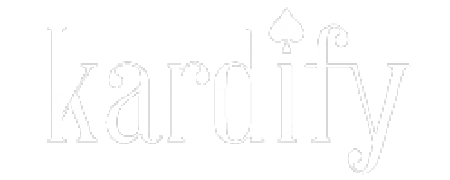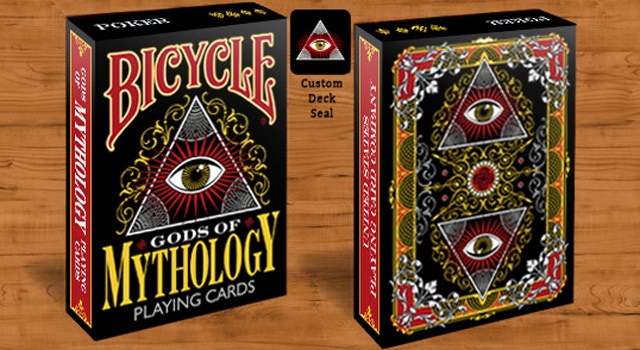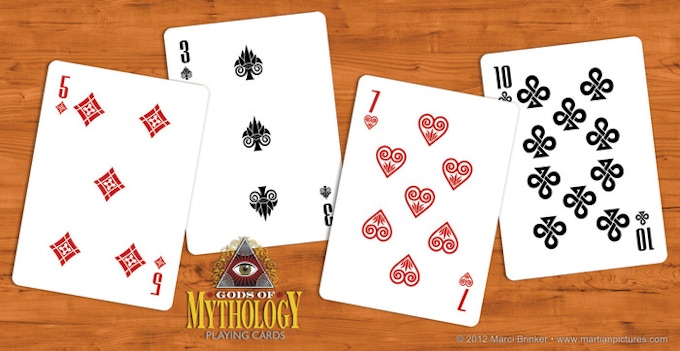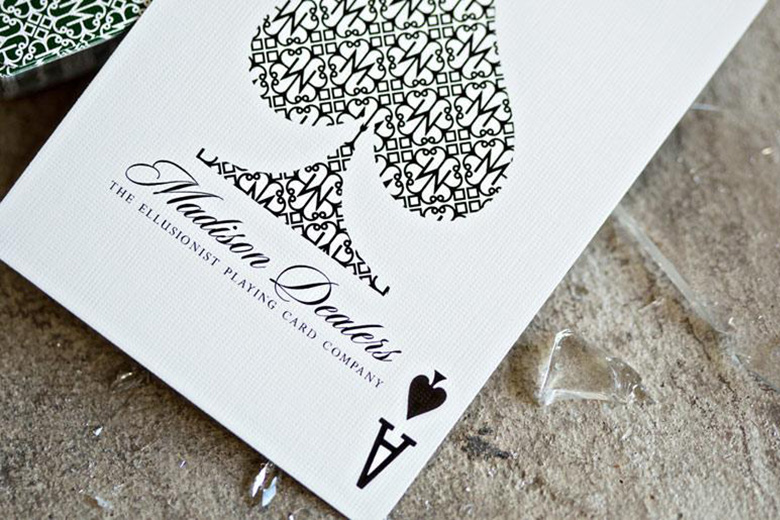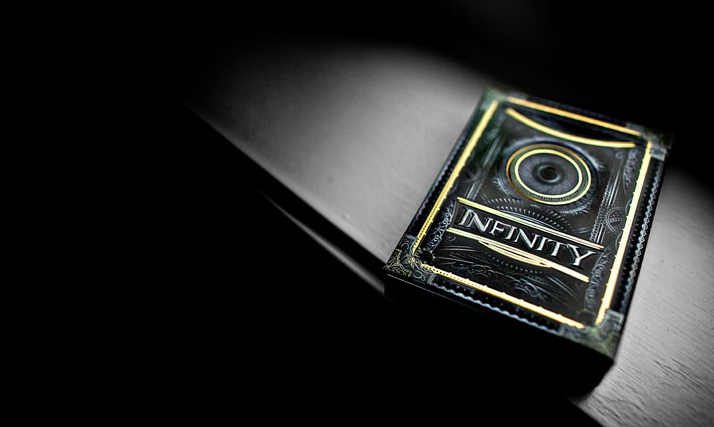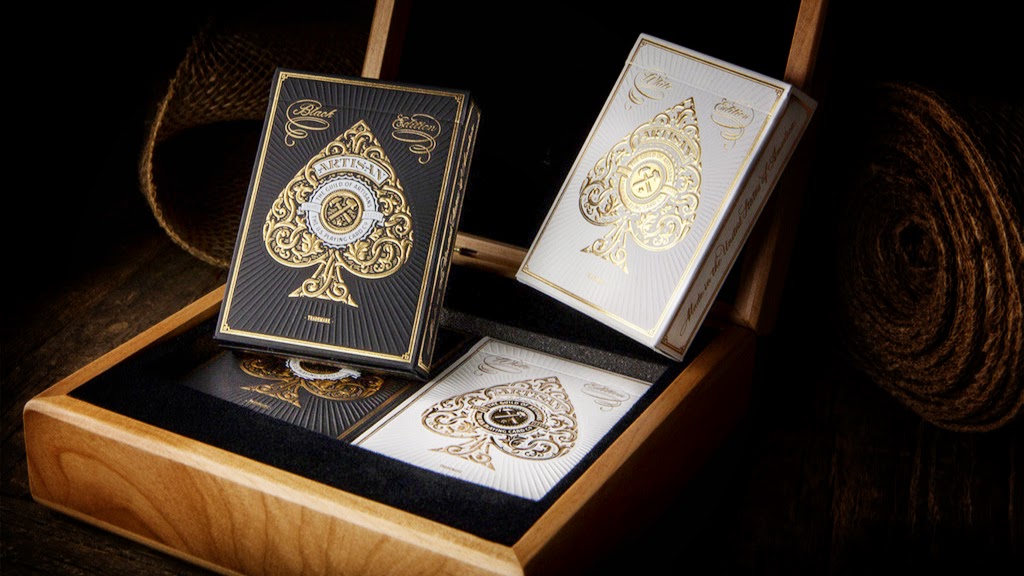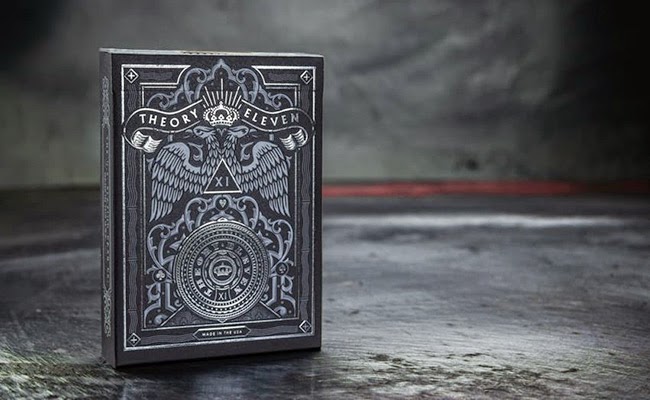Last week on July 17, designer Marci Brinker launched her first ever Kickstarter playing card project – Bicycle Gods of Mythology and it is a powerhouse of mythology and design! The Bicycle Gods of Mythology deck features many different mythological gods and goddesses that have been used in stories for thousands of years. Unlike most deck projects, Marci was extremely ambitious and designed every single card of this 56 set before the project was launched. She also had the design approved by the United States Playing Card Company, which means if funded the design is good to go to the presses.
The artwork is 100% custom and was extensively researched to stay true to not only the characters but it also stays true to the playing cards she grew up loving by keeping the color palette and traditional design elements of standard playing cards in tact. With this project, Marci sought to recreate mythological gods out of the style of traditional Anglo-American court card and she pulled it off flawlessly.
The project will be accepting funds until August 16. If funded, the decks will be set to ship in December 2013.
Tuckcase.com was able to get in touch with Marci to ask her about her design process and career along with the idea behind Bicycle Gods of Mythology. Read further to learn more about this incredible project directly from Marci….
Tuck Case: Can you tell us a little bit about your design background?
Marci Brinker: I’ve been drawing for as long as I can remember and I was always working on paintings or other art projects when I was in school. I studied graphic design in college, but ended up getting my degree in technical theater/scenic design instead. It still involved a lot of design and illustration because I had to do sketches and final renderings of the sets, along with scenic painting. I worked in a professional theater for a couple of seasons, and the opportunity came up there to move into the marketing department where they did all of the promotional materials for the theater. This was the late 1980s, and I had never used a computer before! It was early in the desktop publishing era, so I had to just dive in and give myself a crash course in it. They took a chance on letting me move into that position, provided I could get up to speed on the Mac, so I came in every day for about 2 weeks during the theater’s summer hiatus and learned to use my first Mac. After that, I moved to Florida and designed t-shirts for many years and I learned how to use Illustrator and Photoshop then. Later, I worked in theme park design, did package design and marketing materials for an educational toy company, marketing for an engineering company, and now I do package design and product development in the craft industry. It’s been a circuitous path!
Tuck Case: How did you come up with the idea of Gods of Mythology?
Marci Brinker: A few years ago, I was feeling burnt out from a corporate design job that I didn’t like, and I was even thinking about changing careers. I realized that even if I did that, I would probably still be drawing and designing in my free time, but making art for myself because I wanted to do it. I wasn’t doing that at all then because it was the last thing I wanted to think about when I got home after doing it all day, but it’s different when you’re doing it just for yourself because you have the freedom to do whatever you want. I ended up changing jobs, but not careers, and I started drawing more in my sketchbook and carrying it around with me more. I also kept a running list of ideas for art projects or miscellaneous ideas I had so that I wouldn’t forget about them while I was working on other things. It’s tough to stare at an empty page and have no idea what to fill it with, so keeping a list gave me lots of places to start each time I had a new empty page. One of the things on the list was “design a deck of playing cards” because I could remember looking at court cards as a kid and thinking I’d like to be good enough someday to be able to design something so detailed and intricate. It’s also a unique design challenge to come up with that many different card designs which each have to stand on their own, but work together to give the whole deck a cohesive look, not to mention having each of the suits also hold together as a family.
I was working on a different art project, which was to do some illustrations depicting scenes from Neil Gaiman’s novel “American Gods.” It’s one of my all-time favorite books – it has mystery, it’s dark and sometimes tragic, but also funny at times, and it has some of the best characters and most memorable scenes I’ve ever read. The story involves gods and other beings from ancient and diverse mythologies living among people in the modern world. Out of curiosity, I looked up some of the myths about the characters in the book, and it suddenly occurred to me that mythology would be a great subject for a deck of cards. The deck doesn’t have much to do with the novel, really, but that’s where the seed of the idea came from. I still plan to pursue those paintings, but I jumped right into designing the deck after the idea came to me.
Mythology has always been interesting to me because so many cultures have used mythology as way to look at, or to explain, the world. There was a documentary series on PBS called “The Power of Myth” and it was Joseph Campbell and Bill Moyers talking about mythology, storytelling, and the hero’s journey. Campbell tied in modern storytelling with mythology and used “Star Wars” as an example of the classic hero’s journey, and he showed how mythology is around us all the time.
Tuck Case: This deck has a lot of history behind it, what kind of research went into designing this deck?
Marci Brinker: I spent quite a bit of time early on just looking into the mythology and writing down lists of which gods and which mythologies might work best. I think I initially considered just doing Greek gods, but then I thought it could be a lot more interesting to choose 4 major fairly well-known mythologies so that each could represent a different suit.
It seemed like a no-brainer to use Greek and Roman mythology because a lot of people are familiar with them. Norse mythology was a given in this case because the character I wanted to do first and foremost was Odin. I read a lot about his mythology when I was reading “American Gods” and he seemed really interesting. Egyptian mythology seemed like another that people know to some degree, and I’ve always liked the symbols associated with it (like the scarab and the ankh). So after I knew which mythologies I wanted to do, I started making lists of which gods would fit in. The Kings were the easiest to pick, because a lot of myths have some sort of hierarchy among the gods already established. I broke away from it a little on the Romans because I thought Zeus and Jupiter were too similar and Neptune allowed for more interesting details (like the trident and the the fish and seahorses). There were many different possibilities for the Queens and the Jacks, so I had lists of them and did research to figure out which ones would be the most interesting to do.
After I finally nailed down which gods to use, I gathered some imagery to help with physical characteristics. I decided early on that I wanted to do the art in the same graphic style that you would recognize from standard playing cards, and I also decided to keep the color palette pretty close to that, with just a few additional colors where I needed them. I knew I could choose to do any art style or color palette, but I wanted to pay homage to the decks of cards I had always remembered and admired from the past.
Tuck Case: This deck is extremely detailed and even showed up on some forums months ago. Now that it is launched and every card is designed, how long did this entire process take?
Marci Brinker: It took quite a few months. Since I work full-time, I often work on art projects in the evening, and of course regular life responsibilities sometimes intrude on that time too. I started doing the research for it around September of last year, and I did some rough sketches then. I had finished the courts and the original backs and posted them on Behance, DeviantArt and on my website in December. I wasn’t sure if anyone would be that interested in them, but I like posting my projects just as I like looking to see what projects other people are doing. I didn’t really have a plan for getting them printed and hadn’t thought about it that much.
Over the next few months, I started getting some comments and emails from people wanting to know if they could buy them or suggesting a Kickstarter project or HOPC submission. I started to think that maybe I should look into it. I decided to go back in and design the jokers, the pips, and the tuck box. I also redesigned the back of the cards so that I would have a complete design finally. That way, if I could find a way to have them printed, they would be ready to go. That was in March of this year, and between doing some cleanup work and some revisions on all of them, along with the new designs, it was probably late May or early June before they were all done.
Sketch of Loki (Joker) courtesy of Marci:
Tuck Case: You posted on The Discourse forum how you submitted the deck to HOPC, Ellusionist and Theory 11; did you ever hear from them regarding the submission?
Marci Brinker: I did submit the designs to all of them, but didn’t hear back from them. I’m sure they get lots of submissions, and they all seem to need about a month of review time – if you haven’t heard from them after a month, you probably won’t hear anything. I worked on finishing the deck while I was in a little bit of a holding pattern, waiting to see if each one would respond. I also used the time to start researching the Kickstarter process as it became more and more clear that I probably would need to go in that direction. I think it was probably just not the right fit artistically for any of them, or maybe not the right timing, but it was worth a try. Kickstarter initially sounded like more than I wanted to take on, but I did a ton of research and I’ve been watching a lot of playing card projects. I finally decided that I should just give it a shot. So far, it’s been a good experience and I really hope the project will be successfully funded. It has been a lot of work, but it would be very rewarding to have it printed.
Tuck Case: Is this your first attempt at designing a playing card deck?
Marci Brinker: It is my first attempt, and it has been a great learning experience and an incredible design challenge. I’m not sure that I’ll start on another one soon, but I continue to add ideas for other decks to my list of possible art projects, so you may be seeing more deck designs from me in the future. I think the next one will go a little easier since I’ve done one already and have a little better idea of how to approach it, but there will always be unique challenges to designing one, regardless of the subject or concept.
Tuck Case: Do you have any favorite playing card decks? Do you collect yourself?
Marci Brinker: I can’t really claim to be a collector, but as I’ve been watching projects on Kickstarter and seeing more and more of the great designs people are doing, I have started backing a few and I think I’ll continue to do that. There are so many great designs at places like Theory11 and Ellusionist too. It’s hard to single out a favorite because there are so many great ones and knowing how much work goes into them only increases my appreciation. Most recently, I was blown away by Lee McKenzie’s Empire deck and also by Jackson Robinson’s Federal 52 decks on Kickstarter – the intricacy and craftsmanship on those decks are amazing and inspiring.
Click here to check out Bicycle Gods of Mythology on Kickstarter.

